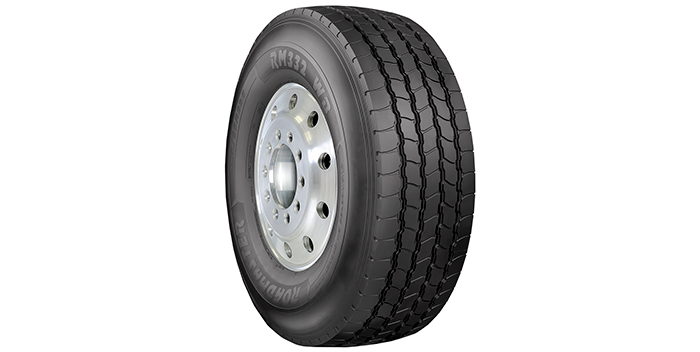4. Ensure Proper Bead Seating and Tire Installation: Ensuring proper bead seating when mounting tires is also important to optimal performance and tire life. An improperly seated bead creates uneven wear patterns, and increases the chance for ride/vibration issues. You can ensure the tire is properly seated by checking to see that the distance between the rim flange and the aligning ring is uniform around the complete circumference of the tire. With the bead seated against the rim, the distance from the seating ring to the rim should be measured at four different points that are 90 degrees apart around the rim. The distance between the ring and the rim should be the same at all four points.
Much irregular wear, and some ride vibration conditions, can be traced back to the original installation. If the tire is not mounted on the wheel correctly as described above, or the wheel is out of tolerance, problems will arise. In most cases, you will start seeing lateral runout. According to the TMC, lateral runout is defined as: ‘Side-to-side movement of the rotating assembly. For a tire or wheel, its effect is to lead a vehicle alternately left and right as it rolls along, creating the perception of a shimmy or wobble.’ Once the tire is installed, a runout gauge should be used to confirm the trueness of the wheel assembly. If it’s not running true, something is amiss. Don’t ignore this area. If you do, expect problems down the road.
A simple inspection to ensure proper bead seating upon installation can help ward off issues in the future.
5. Choose The Right Tire for the Application: Ensuring that you have the correct tire for your service type can help maximize tire life. A tire designed for long haul truck service will not always perform well in a mixed service application. Many tires that are used on both paved highway and gravel roads, or even off road, require a different tread design and a more cut/chip resistant tread to give good service. Tread designs that resist stone retention can reduce stone drilling and casing damage. As stated earlier, make sure tire load capacity matches the axle weight on your trucks. Mud traction or snow traction may be needed, and this will definitely influence the tread design as well.
6. Total Vehicle Alignment: To keep tires wearing evenly, vehicle alignment should be checked every 80,000 to 100,000 miles or every 12-18 months. A good source on total vehicle alignment can be found in the TMC recommended practice RP 642B. Vehicle misalignment often shows up as an irregular wear condition on steer tires. A close inspection of steer tires can help you diagnose the potential alignment problem. Three forms of irregular wear that are often associated with vehicle misalignment are feather wear, rapid shoulder wear (one shoulder) and one-sided wear. If the left and right steer tires have the opposite wear pattern (i.e. the outside shoulders of both tires is worn fast), then a toe-in or toe-out condition is present. If the left and right steer tires have the same wear pattern (i.e. inside shoulder of left steer and outside shoulder of right steer worn fast), then you have a misaligned drive axle.
7. Removing Tires at the Right Time for Retreading: Department of Transportation (DOT) regulations say that the tread depth for any tire on the front wheels of a bus, truck or truck tractor must be at least 4/32nds of an inch when measured at any point on a major tread groove. All other tires on the vehicle must have a tread depth of at least 2/32nds of an inch when measured at any point on a major tread groove. If any measurements are at or below these depth requirements in any part of the tread, the tire should be removed from service immediately.
Some fleets will pull steer and drive position tires early to help maintain traction and rotate them back to the trailer to run out the remaining tread life. If the fleet’s application tends to experience penetrations from nails or other road debris, then it’s probably a better practice to pull the tires early and retread them to help preserve the casing integrity.”














